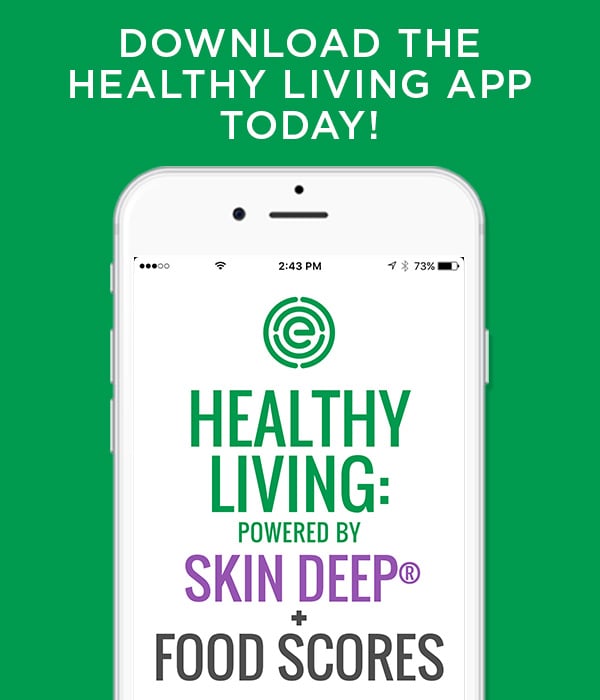Data: Good
Silica, Crystalline (Quartz)
- This ingredient is unacceptable for use in EWG VERIFIED products
- This ingredient is unacceptable for use in EWG VERIFIED products
- This ingredient's score is higher if used in product forms that are inhalable (e.g., sprays, powders) because of respiratory concerns. The score is lower if used in product forms that have lower risk of inhalation (e.g., solids, liquids)
- This ingredient is unacceptable for use in EWG VERIFIED products
Other Concerns
Enhanced skin absorption, Persistence and bioaccumulation (high), and Non-reproductive organ system toxicity (moderate)SYNONYMS
Unacceptable
Unacceptable: EWG VERIFIED products cannot contain this ingredient
Quartz is a mineral and the most common form of silicon dioxide or crystalline silica. Respiratory exposure to large quantities of crystalline silica in the work-place setting has been associated with pulmonary silicosis, a severe lung disease. Long-term, high-volume occupational exposure has been also linked to other disorders such as progressive systemic sclerosis, systemic lupus erythematosus, rheumatoid arthritis, dermatomyositis, glomerulonephritis (renal disease) and vasculitis. Research is ongoing on the relevance of these systemic effects to silica exposure in non-occupational settings via consumer products (Steenland 2005; Stratta 2001).
Common concerns
See how this product scores for common concerns.
-
MODERATECancer
-
LOWAllergies & Immunotoxicity
-
LOWDevelopmental and Reproductive Toxicity
-
LOWUse Restrictions
Ingredient concerns
- CONCERNS
- DATA SOURCES
Products with this Ingredient


| conditioner | 3 products |
| concealer | 27 products |
| brow liner | 10 products |
| body firming lotion | 1 products |
| moisturizer | 7 products |
| styling gel/lotion | 4 products |
| hair styling aid | 3 products |
| baby sunscreen | 1 products |
| bronzer/highlighter | 37 products |
| mask | 39 products |
| facial cleanser | 20 products |
| exfoliant/scrub | 17 products |
| serums & essences | 11 products |
| toners/astringents | 7 products |
| facial moisturizer/treatment | 39 products |
| setting powder/spray | 7 products |
| makeup primer | 7 products |
| foundation | 14 products |
| lip gloss | 8 products |
| lip balm | 3 products |
| eye shadow | 79 products |
| lipstick | 67 products |
| bar soap | 1 products |
| body wash/cleanser | 3 products |
| shampoo | 5 products |
| around-eye cream | 5 products |
| blush | 13 products |
| nail treatment | 2 products |
| mascara | 1 products |
| Dry Shampoo and Hair Powders | 1 products |
| body spray | 1 products |
| hair treatment/serum | 3 products |
| hair spray | 3 products |
| nail polish | 8 products |
| lip liner | 1 products |
| anti-aging | 1 products |
| body oil | 1 products |
| eye liner | 10 products |
| exfoliant/scrub - large particle | 1 products |
| hair color and bleaching | 3 products |
| antiperspirant/deodorant | 1 products |
Cancer


| CONCERN | REFERENCE |
|---|---|
| Possible human carcinogen | American Conference of Governmental Industrial Hygienists (ACGIH) |
| Limited evidence of carcinogenicity | Centers for Disease Control and Prevention (CDC) |
| Known human carcinogen | National Toxicology Program (NTP) |
Organ system toxicity (non-reproductive)


| CONCERN | REFERENCE |
|---|---|
| Classified as expected to be toxic or harmful | Environment Canada |
| Classified as a high human health priority | Environment Canada |
| Limited evidence of respiratory toxicity | US National Library of Medicine, |
Persistence and bioaccumulation


| CONCERN | REFERENCE |
|---|---|
| Not suspected to be bioaccumulative | Environment Canada |
| Persistent, bioaccumulative in wildlife and humans | US National Library of Medicine, |
| Persistent, bioaccumulative in wildlife | US National Library of Medicine, |
Ecotoxicology


| CONCERN | REFERENCE |
|---|---|
| Not suspected to be an environmental toxin | Environment Canada |
- American Conference of Governmental Industrial Hygienists (ACGIH)
- Centers for Disease Control and Prevention (CDC)
- National Toxicology Program (NTP)
- Environment Canada
- US National Library of Medicine,
Understanding scores
Cosmetics and personal care products are not required to be tested for safety before being allowed on the market. The Skin Deep® scoring system was designed to help the public understand whether a product is safe to use or whether it contains ingredients of concern.
Every product and ingredient in Skin Deep gets a two-part score – one for hazard and one for data availability. The safest products score well by both measures, with a low hazard rating and a fair or better data availability rating.
HOW WE DETERMINE SCORES
Hazard score
The Skin Deep ingredient hazard score, from 1 to 10, reflects known and suspected hazards linked to the ingredients. The EWG Verified® mark means a product meets EWG’s strictest criteria for transparency and health.
Data availability
The Skin Deep data availability rating reflects the number of scientific studies about the product or ingredient in the published scientific literature.











